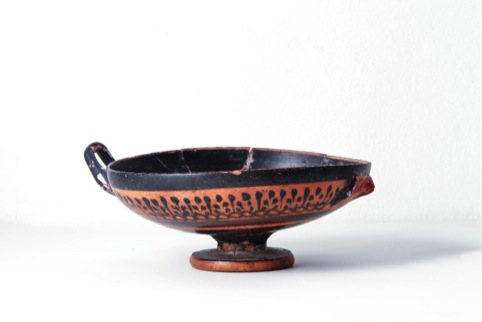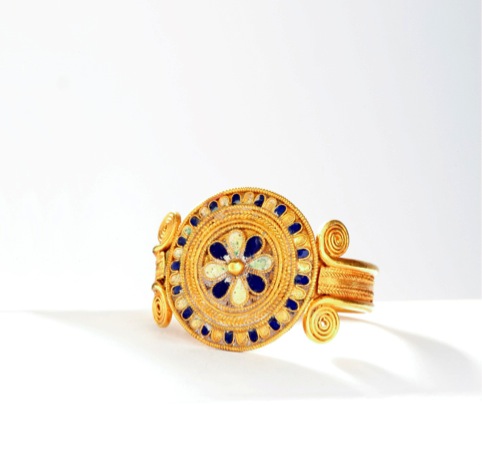Funerary goods
The grave goods from the Punic necropolis of Sant'Antioco consist of the materials used in the ritual and of the personal items which belonged to the deceased (fig. 1). From the research carried out in the so-called Is Pirixeddus necropolis, it has been possible to improve the understanding of the most important aspects concerning the composition of the grave goods, the craftsmanship products and the rituals which concern them.

The ceramic pottery consists of an actual "tableware" set of dishes, very similar to that used daily by the deceased during his lifetime, as well as vases which instead mainly concern the funeral ritual: amphorae, jugs and pitchers of different shapes and sizes, typical cups and dishes with rather wide lips (figs. 2-4). In addition to the vessels of Phoenician tradition, the grave goods also include pottery imported from the Greek world. Imported products were often very expensive and sometimes they were replaced by very similar imitations, i.e. almost identical, but produced locally in imitation of the Greek originals (fig. 5).




There were also other small artefacts of various kinds among the grave goods, both for personal use and those with a magical-apotropaic purpose, i.e. linked to superstition and with the function of warding off evil: amulets in different materials, such as bone, metal, precious stones, glass paste, talc and often they were modelled and assembled into necklaces worn by the deceased. These were generally small objects, mostly religious symbols, such as phalluses, hearts, feet, eyes of Ra, pillars and Egyptian deities such as Bes, Horus, Ptah, Isis and sacred animals. Ceramic masks, ostrich eggs decorated in various ways, whole or crushed and small scarabs carved and engraved in hard stone have also been found (fig. 6).

Finally, the deceased was also buried along with his personal items, such as jewellery, usually made of gold or silver, which included earrings, necklaces, "hair slides", rings with engraved bezels or decorated with coloured glass paste (figs. 7-8).


Bibliografia
- E. ACQUARO, Amuleti e scarabei, IN AA.VV., I Fenici, Milano 1989, pp. 394-403.
- P. BARTOLONI, Studi sulla ceramica fenicia e punica di Sardegna, Roma 1983.
- G. PISANO, I gioielli, in Aa. Vv., I Fenici, Milano 1989, pp. 370-393.
- S. MUSCUSO, La necropoli punica di Sulky, in M. GUIRGUIS, E. POMPIANU, A. UNALI (a cura di), Quaderni di Archeologia Sulcitana 1. Summer School di Archeologia Fenicio Punica (Atti 2011), Sassari 2012.
- C. TRONCHETTI, Sant’Antioco, Sassari 1989

 VR
VR